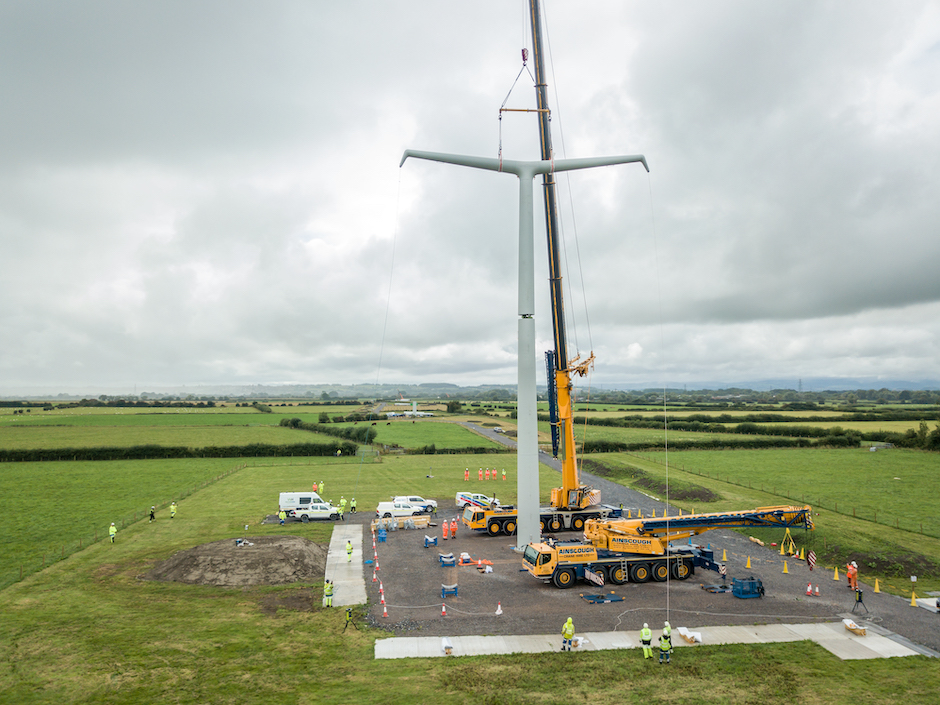
The new pylons are the first newly designed pylons to be introduced in Great Britain for nearly a century.
Aiming to connect low carbon electricity from Hinkley Point C Nuclear power station to six million UK homes and businesses, the project will see 116 new T-Pylons running along a 57km route between Bridgwater and Portbury, other than through the Mendip Hills AONB where the new connection goes underground. 249 electricity pylons will also be removed between Bridgwater and Avonmouth.
The 35-metre high T-Pylons have a single pole and T-shaped cross arms which hold the wires in a diamond ‘earring’ shape. They are a third shorter than National Grid’s traditional lattice pylons and use less land.
Responding to demand for new energy infrastructure to support the UK’s net zero goals, this development was the result of a 2011 competition organised by the Royal Institute of British Architects and government, won by Danish firm Bystrup with the T-Pylon design.
Bystrup wins UK Pylon Design Competition with T-Pylon
National Grid T-Pylon prototype erected at site in Denmark
“We are always looking for innovative new ways to mitigate the impact of our infrastructure on the natural environment, and projects such as T-Pylons are a great example,” said Chris Bennett, acting president, National Grid Electricity Transmission.
“This new design forms part of our significant investment in the network in England and Wales, adding capacity onto the grid to deliver increasing amounts of low carbon energy and support the UK’s drive towards its net zero target.”
Technologies used by the National Grid to mitigate the impact of electricity infrastructure include alternative lattice pylon designs and different types of underground and subsea cable systems. The appropriate approach for each new development is assessed on a case-by-case basis with each technology used based where it is operationally possible and cost efficient for consumers, the company said in a statement.
Construction of the first 48 T-Pylons by Balfour Beatty on behalf of National Grid began last week near East Huntspill, with each pylon taking roughly 5 days to build. Construction of the remaining 68 pylons, north of Sandford, will begin in 2022. There are currently no other planned sections of T-Pylons.




Glasgow trial explores AR cues for autonomous road safety
They've ploughed into a few vulnerable road users in the past. Making that less likely will make it spectacularly easy to stop the traffic for...